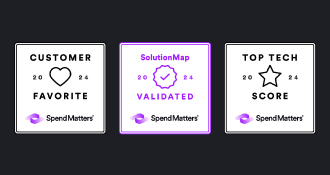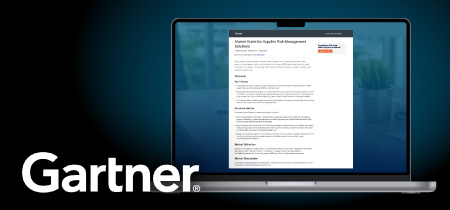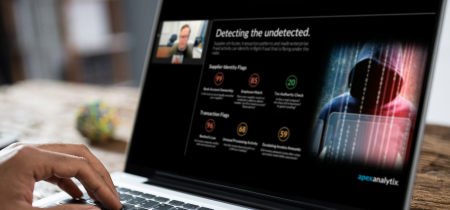At the apexanalytix Icon 2023 P2P Conference, Amy Platis, Director of Finance, Northwestern Medicine; Tim Pidgeon, Controller Coordinator for Americas Finance, UPS; and Nicole Thomas, Vice President of Project Management and P2P Consulting, apexanalytix, led a lively discussion about P2P project approvals. Read on for key points from their session, plus a list of procure-to-pay project approval best practices gathered from benchmarking and hundreds of apexportal and recovery audit projects. They may help you next time you need to get a project approved.
Tim from UPS provided several examples of taking a long time to get project approval – months or even more than a year. It is important to stay on top of the approval process when a particular topic is hot (think bank account change controls, supplier diversity, ESG compliance). specific topic is hot. The chance of getting it approved during this period is much greater. “Strike while the iron is hot.”
Amy from Northwestern Medicine stressed the importance of capturing your requirements during the budget planning process. Always build some buffer in your budgeting process keeping in mind long-term strategic goals. Include some contingency dollars in your budget for unforeseen project overruns. And be sure you have adequate time for the more strategic, roadmap projects.
Hot topics: Knowing exactly what you are getting in a solution – fit for purpose (versus a solution from a provider that isn’t their core technology), function, implementation, ease of use, and making sure you do the due diligence on what is available right now – before you recommend and do the business case. The magic of self-funding, with solutions for dynamic discounting and recovery audit projects. This is critical in trying to secure needed IT resources for projects – avoiding the “hunger games” of IT resource prioritization. Outsourcing versus internal ownership – the cost and rework when having to bring a solution back in-house if the outsourcing model does not pan out.
Twelve-Plus-One Ideas for Success:
Greasing the Wheels of P2P Project Approval

1. Define clear objectives.
What problem are you trying to solve and who else benefits from the solution? Clearly articulate the goals and benefits of implementing a P2P system. Focus on how it will improve operational efficiency, reduce costs, enhance vendor management, increase compliance, and streamline the procurement process.

2. Conduct a thorough analysis.
Perform a comprehensive analysis of your current procurement processes and identify pain points, inefficiencies, and potential risks. Quantify the financial impact and potential cost savings that the proposed P2P project will achieve.

3. Timing is everything.
Start early – projects can take years to research and complete. And if they are expensive and require cross-functional resources, build in the time to build consensus, schedule time with the capital committee for review and approval, and map out the project approval timing in advance. Know what timing matters to your approvers, the involved stakeholders, and the resources needed to complete the project. If IT is involved, know what their priority list is. Sync with the budget cycle.

4. Develop a robust business case.
Build a persuasive business case that outlines the rationale for implementing a P2P project. Include a detailed cost-benefit analysis, return on investment (ROI) projections, and a timeline for achieving measurable results. Highlight the alignment of the project with strategic organizational objectives. Consider the power of offsetting project cost with an accounts payable recovery audit, contract compliance audit, dynamic discounting solution, or card rebate program.

5. Know your audience.
Engage stakeholders from various departments such as procurement, finance, IT, and operations. Who is affected and what is important to them? Know what other projects they have going on – their priorities – if and how the proposed project aligns with them. Position the impact this project can have on their career. Understand their needs, concerns, and expectations, and incorporate their input into the project plan. Show how the project will benefit each stakeholder group individually and collectively. Build relationships with affected parties. Socialize the project, get horizontal and vertical buy-in and build consensus.

6. Demonstrate industry best practices, leverage past successes, and be creative.
Research and present accounts payable, procurement and other relevant industry benchmarks and best practices. Show how leading organizations have successfully implemented P2P solutions, improved their procurement operations, and achieved positive outcomes. Leverage your own past successes. A successful prior project delivered on budget and on time can be part of a business case for future success. Think differently about your project and how you will present it. For example, bundling your project with another one that is important to management can help you get the green light.

7. Address potential risks and prepare mitigation strategies.
Identify potential risks associated with the project and outline mitigation strategies. This demonstrates your proactive approach to managing risks and helps build confidence in the project’s success. If you make a budgeting, resource or timing error that you discover during the approval process, admit it right away and be ready to offer solutions.

8. Present a phased implementation plan.
Break down the project into manageable phases to highlight a clear roadmap for implementation. Highlight quick wins and low-hanging fruit that can deliver tangible benefits in the preliminary stages of the project. This approach can help build momentum and gain support for subsequent phases.

9. Highlight technological advantages.
Emphasize the technological advantages of implementing a P2P system, such as automation, data analytics, real-time reporting, and integration capabilities. Show how these features can enhance decision-making, reduce manual efforts, and improve overall process visibility.

10. Quantify, quantify, quantify.
Quantify value to organization (efficiency, visibility, etc.). Quantify financial results. Quantify time commitment. Clearly present the financial implications of the project, including the initial investment, ongoing maintenance costs, and potential cost savings. Illustrate how the long-term benefits outweigh the initial expenses and provide a positive ROI.

11. Communicate the project’s impact.
Clearly articulate how the P2P project aligns with the organization’s strategic goals and how it will positively impact the bottom line, customer satisfaction, and operational efficiency. Use data, case studies, and testimonials to strengthen your argument.

12. Obtain executive sponsorship.
Secure the support and sponsorship of key executives who have the authority to approve the project. Clearly communicate the benefits, risks, and strategic importance of the project to gain their buy-in.

13. Engage in dialogue and address concerns.
Be prepared to engage in discussions with decision-makers and address any concerns or objections they may have. Be open to feedback and provide clear answers to their questions. Anticipate objections and prepare persuasive counterarguments.
Small or large, a procure-to-pay project can succeed or fail if you do not prepare, communicate, and actively manage the process. And remember what Denis Waitley said: “Expect the best, plan for the worst, and prepare to be surprised.”


















